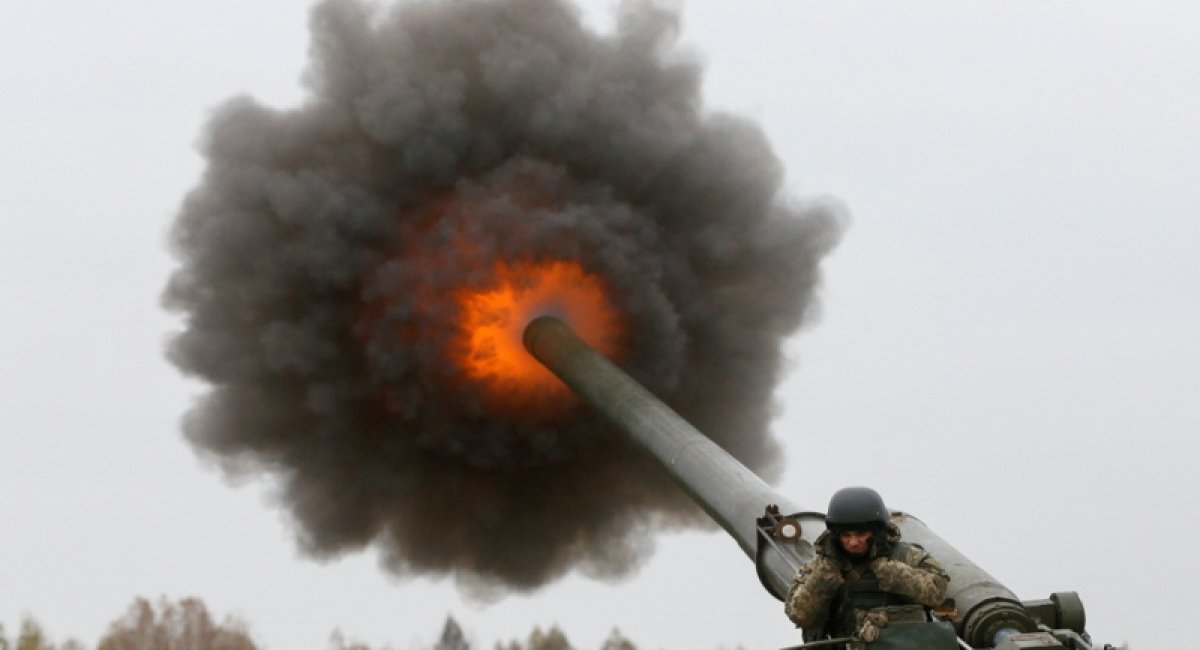The Company has a built-up system and products that are already being used in practice. These are software applications for calculating munitions aeroballistics; a cross-platform ballistic library; a ballistic computer and a proprietary ballistic processor.
In performing firing missions artillery men employ firing charts compiled with account taken of tactical and technical capabilities of the guns and munitions being used, environmental factors, etc. Tabular data has traditionally been used and will continue to be used by artillery men – in Ukraine, Russia, NATO and elsewhere -- for firing their guns accurately on targets.
Read more: Hermes-C2 – Ukraine’s new indigenous combat vehicle c2 system
Turingismus has reviewed the firing charts for a number of major artillery systems in current use and found inconsistencies that may result in an overrun of the ammo and time budgets for a given firing mission. The software applications and other products developed by Turingismus could be used to update firing charts for all existing cannon artillery systems and to remove systemic errors, and thus significantly increase the effectiveness and efficiency of artillery firing missions.
BALLS -- a library that is not for books
BALLS is an electronic database wherein all tabular and experimental ballistics data on production-standard and new munitions as well as individual artillery systems and even barrels are stored and recorded.
The NATO Armament Ballistic Kernel (NABK) had already existed and worked when Turingismus began to compile its own BALLS library. The NABK was developed on a model described in STANAG 4355 (modified point mass model). This model has been developed for stable flight conditions where angle of attack deviations are small. Turingismus’ model, which draws on the NABK experience, is more generalized and does not make use of small angle of attack approximations.

The BALLS library consists of two main parts – Server part and Client part.
The Server part, wherein the entire mass of data is processed, is responsible for aerodynamic coefficient calculations for any type of munition, without the use of a supersonic wind tunnel.
For the purposes of verification and validation of the BALLS library’s Server part, firing tables for both smooth-bore and rifled weapons of different calibers (from 30-mm to 8-inch naval guns) have been selected. As a result of using the calculated aerodynamic coefficients, parameters of the obtained trajectories coincided with the tabular values, which has validated the selected approach.
The Server part is constantly updated with new data. To this end, a proprietary measuring equipment kit has been created, and, among other things, artillery ballistics stations have been upgraded, with a resulting two orders of magnitude increase in efficiency of the projectile velocity measuring process.
The Server part also generates the data required to support operation of the Client part, which is integrated with Turingismus mobile ballistic computers and processors. It calculates projectile trajectory for the given conditions of firing. This software component provides the functionalities of simulation engine, search engine, and correction engine.
The results of the calculations made provide a complete set of trajectory data for each point of the projectile's flight. For this purpose, a 6-degree-of-freedom model has been developed by Turingismus specifically for this application. This model is equally well suited for trajectory simulations of rifled and smooth-bore weapons, as well as aerial bombs.
Missions to be Handled by POSTMAN
What Turingismus is most proud of is its new POSTMAN ballistic processor -- the "brains" of the ballistic computer. This is a flexible solution adaptable to different types of weapons. The ballistic processor can be fielded with battle management systems or used to support the development of new “smart” weapons solutions. The processor is fully hack-proof since it doesn’t make use of an operating system at all. Neither the French nor Americans can boast of having anything to match it.

As Turingismus explained in a Defense Express interview, "At some point, we realized it’s physically impossible to make a universal computer, because regulations for the combat use of artillery are different in different armies, prescribed by their respective Articles of War. The full content of the BALLS library’s Client part has therefore been hardwired into the POSTMAN chip – a universal ballistic module that can be inserted anywhere; it can interface with any calculation-capable Client device".
ARPOS Ballistic Computer
Turingismus has implemented all its ideas in a mobile ballistic computer it developed collaboratively with Infozahyst and with inputs from combat-experienced Ukrainian engineers. Named ARPOS (Artillery Portable Simulator), it represents an individual aiming system for indirect fire weapons, based on an innovative trajectory calculation technology. The ARPOS’ software component relies on the BALLS library’s Client part. It differs from poorly protected tablet-based solutions by the absence of a file system and by being environmentally sealed to IP67 standard.

"Our ballistic computer offers advantages in terms of fast and automated target aiming (especially when firing from defilade positions), fire adjustment, as well as improved accuracy due to the use of more comprehensive trajectory predictions, meteorological data and Earth curvature. In testing a client solution, the ARPOS device was deployed on a firing test range for calculating initial indirect-fire data for the D-81 gun used on the T-64 and T-72 tanks and for the 120 mm 2S12 Sani mortar system. Following completion of the trials, performance of the device was graded “excellent”, Turingismus told Defense Express.
ARPOS is currently undergoing substantial upgrades to make it better configured for the needs and capabilities of a soldier on the battlefield. It may indeed be argued that the Turingismus’ ballistic computer can be defined as being the most advanced product on the global market for HMFCC (Handheld Mortar Fire Control Computer) system solutions. The Turingismus’s ballistic computer is suitable for work with both NATO and non-NATO weapons, which experts say distinguishes it favorably from its closest counterparts that the Americans, Turks and Israelis have.
Military Users Evaluation and Feedback
Defense Express has contacted the Ukrainian Armed Forces’ Central Armaments Research Institute (AF ARI) for an independent assessment of Turingismus' proposals. Below are some of the comments received.
"A review conducted by AF ARI to assess the proposed Turingismus’ device -- the mobile ballistic computer ARPOS -- revealed its advantages over existing ballistic calculators, achieved through the use of a trajectory calculation technology based on the BALLS library. The proposed technical solution allows for calculating projectile trajectories for the given conditions of firing.
This Turingismus’ product could be used for compiling firing tables for the new UPIC 82-mm mortar. Conclusive departmental trials of the mortar have verified and validated the usability of the Server part of the ARPOS mobile ballistic computer software package. This verifies the possibility and feasibility of using Turingismus solutions for 30/40/60 mm grenades, 120 mm mortars and their associated new rounds, for new 152 mm artillery rounds and other munitions.
Provisional Outputs and Outcomes
Turingismus has developed and demonstrated software and hardware solutions that can improve the effectiveness of artillery and other large-caliber munitions. These solutions can be applied to calculating mathematical models and trajectories of all existing types of munitions, artillery systems, mortars and tank guns. It offers service to calculate the aeroballistic coefficients and to compile firing tables for new types of munitions and weapons systems. The ballistic computer and its associated proprietary processor have been created. This, among other things, would provide advantages in terms of (1) allowing innovative tactical techniques to be applied to various battlefield scenarios, (2) significant reductions in the time weapons stay in a given firing position, (3) reduced ammo consumption while performing standard firing missions, (4) being more suited for shoot-and-scoot tactic, and more others.
This all, taken together, can be of extreme usefulness for the Ukrainian Armed Forces as well as for the potential export customers operating Soviet legacy or aging weapons systems, or modernizing their weaponries.
Read more: Digitization of Ukrainian army: capacities of HERMES-C2 tactical control system














